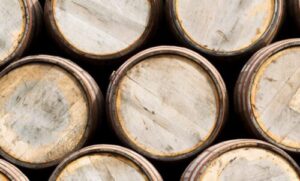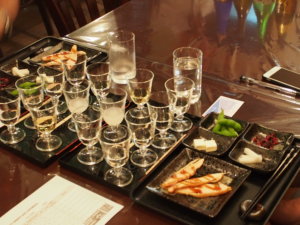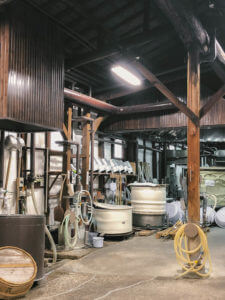What is sake made of? Rice is indispensable for sake brewing. Did you know that there is a special rice for sake brewing? The rice used for sake brewing is called 酒造好適米, shuzo kouteki mai, rice for the sake brewing.
Sake is brewed using sake rice grown in each prefecture of Japan to take advantage of the land and climate of that prefecture.
New varieties of sake-brewing rice have been created through breeding and development of new species, and now there are about 120 kinds of sake-brewing rice, and the number is increasing every year.
This article will introduce the top 10 sake brewing rices out of more than 100 varieties, from the viewpoints of famous sake brewers and their production volume!
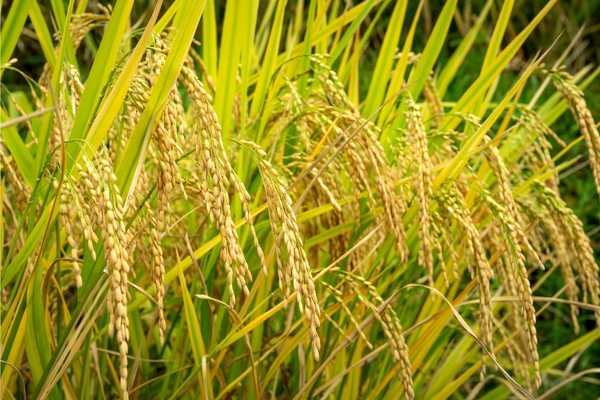
What is the difference between rice for sake brewing and rice for eating?
First of all, what exactly is the difference between rice for sake brewing and rice for eating?
(1) Rice grains are large and hard to break into pieces
The rice we eat at home has a milling ratio of approximately 90%, but sake brewers usually use rice with a milling ratio of 75% or less, which requires more milling than rice for eating.
In addition, the rice is heated during milling, which causes it to crack very easily.
(2) Having a shinpaku, 心白
The shinpaku is the white part in the center of the rice grain, and is found in rice suitable for sake brewing.
This is because light reflects off the gaps between the starchy parts in the center, making them appear white. Koji mold with strong fermentation power is formed by koji mold entering these spaces, and the koji easily dissolves in the main fermentation process. Shinpaku is not often seen in rice for eating.
(3) Low protein content
If the amount of protein is too high, the amount of amino acids in the finished sake will increase, leading to a bland flavor, so low protein is desirable.
Top 10 most suitable rice for sake brewing
Yamada Nishiki / 山田錦
Known as the king of sake rice, Yamada-Nishiki is the most widely produced rice in Japan. It is a cross between Yamadaho and Tankanwataribune. Its large grain size makes it particularly suitable for koji molding, and many sake breweries use Yamada-Nishiki in their sake production. More than half of the nation’s production is grown in Hyogo, and Yamada-Nishiki grown in the “Special A district” is said to be of the highest quality.
Gohyakumangoku / 五百万石
The second most produced variety, grown mainly in Niigata and the Hokuriku region of Toyama, Ishikawa, and Fukui. It was more widely grown than Yamadanishiki until around 2000. Its rice quality is not suited for high rice polishing, and it is characterized by a light, crisp sake with no peculiar taste.
Miyamanishiki / 美山錦
This variety was created at the Nagano Prefectural Agricultural Experiment Station by mutating Takane-Nishiki through radiation treatment. It is the third most widely produced variety after Yamadanishiki and Gohyakumangoku, and its main production area is in eastern Japan, including Nagano, because it is easy to grow even in cold regions. It is characterized by its refreshing and light flavor.
Omachi / 雄町
Omachi is the oldest variety of rice suitable for sake brewing, and is the ancestor of Yamadanishiki and Gohyakumangoku. It is a late-harvesting variety, and about 95% of its production comes from Okayama, where it was discovered because tall rice plants tend to fall over and are difficult to cultivate. The quality of the sake is suited for aging, and it secretly attracts fans.
Aiyama / 愛山
Like Yamada-Nishiki, Aiyama is grown in Hyogo and is called the “diamond of sake rice” for its quality. The grains are as large as, if not larger than, Yamadanishiki, and the heart white is often seen. It produces a well-balanced sake with a deep flavor, but is highly prized because it requires delicate sake brewing.
Hattan-Nishiki / 八反錦
This is Hiroshima’s representative rice for sake brewing, and is grown only within the prefecture. It is characterized by its large grain size and large heart white, and its sake quality is refreshing and aromatic. In addition to Hattan-Nishiki, there are other varieties in the Hattan lineage, such as Hattan 35 and Hattan, all of which are derived from Hattan grass.
Dewasansan / 出羽燦々
This variety was developed as a brand-name sake rice in Yamagata, and is a cross between Miyamanishiki and Hanabukiyuki. Like Miyamanishiki, it is resistant to cold and is representative of Yamagata, a prefecture known for its ginjo production. Only sake made from 100% Dewasansan and meeting various criteria is awarded the prefecture’s own “DEWE 33” certification sticker.
Iwai / 祝
A variety isolated from Nojoho in Kyoto and grown only in the prefecture. After the war, cultivation temporarily ceased, but in the 1960s, thanks to the efforts of the Fushimi Sake Brewers Association, it was cultivated again. Suitable for ginjo sake, its large grains and low protein content produce a light, aromatic sake.
Koshitanrei / 越淡麗
This variety was developed in Niigata over a period of 15 years. It is a crossbreed of Yamadanishiki and Gohyakumangoku, two of the most widely produced varieties in Japan. It combines the advantages of both varieties and can withstand a high milling ratio of 40%. As the name suggests, it produces a light, yet flavorful sake.
Ginpu / 吟風
Registered in 2000, Ginpu is a relatively new variety of rice suitable for sake brewing. Originally from Hokkaido, Ginpu is resistant to cold and produces a mellow sake. It is also the variety that inspired the development of sake brewing using Hokkaido’s sake brewing rice.
Summary
Each variety of rice for sake brewing has its own characteristics, harvest time, and ease of handling. The rice grown in each region of the country and each prefecture produces sake with a different flavor.
When you travel around Japan, it is fun to try local sake brewed with the rice of the region you visit.
When Visiting Fushimi Kyoto, Don’t Miss Our Sake Tasting Tour!
When visiting Kyoto, you can’t miss a sake tour of Fushimi – so why not join us on a hunt for the area’s best sake, and best combination with food pairing session and find your favourite along the way?
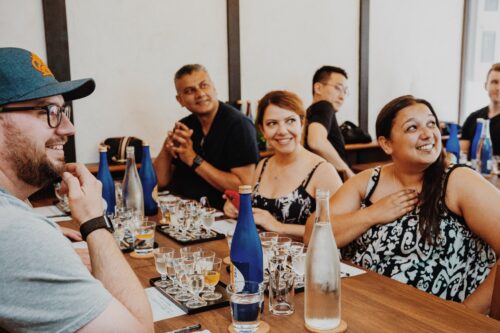
Visiting a bar or sake shop and don’t know which sake to buy or taste? Join our Sake Tasting and Pairing Experience!
In this experience, you will learn all the basics about sake and be able to compare different types of sake to find the differences and get to discover how to truly enjoy sake. Joining our sake tasting tour is surely a great introduction to your sake experience. Discover Japan’s real sake & food culture and traditions!

